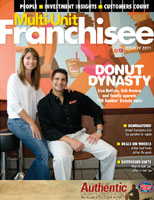Project Financing: Should the Fix Be In?
Interest rates right now are low—very low. They’ve been low for a while. And they’re expected to remain low for the foreseeable future. So, when you go to your bank and they have only a floating-rate loan to offer you, no problem, right? Maybe… but you better make sure you’ve considered all the angles before you pass up the opportunity to convert that loan to a fixed rate.
Entrepreneurs securing new project financing are well aware that banks today typically offer only floating-rate products. Although some lenders may not offer fixed-rate loans themselves, they typically will facilitate converting the loan to a synthetic fixed rate by helping borrowers purchase an interest rate hedge known as a swap. A third party will make the floating-rate payments on the loan, and agree to accept payments at some fixed rate from the borrower. A swap boils down to a transfer of interest rate risk from you, the borrower, to your swap counterparty. You can think of it as insurance—you get rid of interest rate risk by paying an up-front fee and somewhat higher initial rates. They win if interest rates stay low; you win if rates rise.
So when closing a new loan, should you a) buy the insurance and take the fixed rate, b) roll the dice with the bank’s floating-rate product, or c) buy a swap for only part of your debt and go with a blend of fixed and floating-rate debt? Of course, nobody knows what will happen with interest rates in the future, but what you can do is be aware of the current lending environment, stay informed on the interest rate outlook, and understand the potential risks and rewards of each strategy.
The current environment
Why are most lenders offering only floating-rate financing? The simple answer is that they’re not willing to make long-term loans that are fixed at today’s low interest rates. Floating-rate products charge interest at a set spread over an index—and whether that index rate is Libor, prime, Treasury, or another index, rates are all at or near record lows. Libor rates have been under 1.00 percent for several years, prime is at 3.25 percent, and the 10-year Treasury recently dipped to just 2.14 percent in the week of August 8—and that’s after the S&P rating downgrade!
While borrowers should rightly be glad of these record-low rates, the downside is that banks are placing unusually large spreads on their floating-rate products. Whereas a few years ago they could charge 3 percent over 3-month Libor and still earn a decent return, today that would be generating only a 3.28 percent total interest rate—a number at which banks just can’t make money. As a result, spreads have grown artificially high to make up for the low index rates. Our opinion at Cypress is that spreads will possibly come down once base-level interest rates rise back into normal ranges.
Interest rate outlook
In our opinion, with interest rates so low, there is nowhere for them to go but up. The only question is when. Current low rates on a long-term investment such as 10-year Treasurys are one indicator that the market expects rates will stay low for an extended period. Big financial firms and hedge funds bet money every day on what future rates will look like. Taking a peek at a composite of their bets—known as the forward curve—also says the “smart†money expects rates to stay unusually low for the next several years. There are plenty of reasons to support that belief. The slow recovery (or lack thereof), the Fed’s easy monetary policy, and low inflation all lead us to believe that interest rates will stay low until the economic environment changes significantly. That said, the fundamentals of today’s economy and the increased risk for extraordinary political and economic events are incubating inflationary pressures that we believe are likely to push interest rates up over the long term, perhaps quite high.
Risks
Don’t let the last decade of relatively low rates lull you into a false sense of security. Those 10-year Treasurys that are hovering around 2 percent today were above 15 percent in the early ’80s and above 9 percent in the early ’90s. Imagine adding 7 or 13 percent to your floating-rate debt if the rates of 1991 or 1982 return in 2015. While that might be unlikely, it is wise to consider what your exposure to rising interest rates could be, and how badly it might hurt.
Let’s imagine a franchisee with $1.375 million EBITDA, $1 million in rent, and a $5.5 million loan. That’s a 4-to-1 debt/EBITDA ratio, and at an effective interest rate of 5 percent on that 10-year loan, our franchisee is sitting at a reasonable 1.39x fixed-charge coverage ratio. But if rates rise to 10 percent, that coverage ratio drops to 1.25x, and at 12 percent to 1.20x. Now he could quite possibly be in violation of his loan covenants, and a hiccup in EBITDA (or further increase in interest rates) could threaten his ability to pay his bills.
While you may not be able to guess what interest rates will be five years from now, you should understand the particular impacts of potential rate increases on your business. If you have very low debt levels relative to EBITDA, perhaps you can absorb a big hike in interest expense. It still won’t feel good but it won’t put you under. On the other hand, if you are pushing the limits of your borrowing capacity, you probably can’t afford much more interest than you’re already paying. It didn’t work out too well for all those homeowners with variable-rate mortgages; don’t make the same mistake they did. One more thing to consider. For amortizing loans, the loan balance is shrinking with every payment, so future interest rates will be charged on a smaller principal balance.
Just as letting your rate float has risks, purchasing a swap comes with its own potential pitfalls (aside from the initial higher interest rate, which is still attractive by historical measures). Most significantly, swaps can carry large breakage fees if rates drop. In the past, this has locked many borrowers into above-market fixed rates, as the breakage fee is so high as to prevent them from cost-effective refinancing. However, the risk of a large drop in rates is currently much less than normal. The second consideration is the term available on swaps. In today’s market, the maximum term you’re likely to find is 5 years—meaning that on a 10-year loan, you’ll find your interest rates resetting halfway through your loan.
Making a decisionBuying a swap is the easiest way to protect yourself from interest rate risk. Form your own opinion on what interest rates are likely to do over the next several years—but don’t try to outthink the big money on Wall Street or try to predict the macro economy. Understand the risks you face if rates do rise dramatically in the next few years. Once you do, you’ll be in a better position to decide whether that up-front cost and higher-today interest rates are worth the tradeoff of knowing your loan payments won’t change before maturity. For some, that security is more than worth the price.
Dean Zuccarello, CEO and founder of The Cypress Group, has more than 30 years of financial and transactional experience in mergers, acquisitions, divestitures, strategic planning, and financing in the restaurant industry. The Cypress Group is a privately owned investment bank and advisory services firm focused exclusively on the multi-unit and franchise business for more than 22 years. Contact him at 303-680-4141 or [email protected].
Share this Feature
Recommended Reading:
FRANCHISE TOPICS
- Multi-Unit Franchising
- Get Started in Franchising
- Franchise Growth
- Franchise Operations
- Open New Units
- Franchise Leadership
- Franchise Marketing
- Technology
- Franchise Law
- Franchise Awards
- Franchise Rankings
- Franchise Trends
- Franchise Development
- Featured Franchise Stories
FEATURED IN

Multi-Unit Franchisee Magazine: Issue 4, 2011

$50,000
$73,930





 The multi-unit franchise opportunities listed above are not related to or endorsed by Multi-Unit Franchisee or Franchise Update Media Group. We are not engaged in, supporting, or endorsing any specific franchise, business opportunity, company or individual. No statement in this site is to be construed as a recommendation. We encourage prospective franchise buyers to perform extensive due diligence when considering a franchise opportunity.
The multi-unit franchise opportunities listed above are not related to or endorsed by Multi-Unit Franchisee or Franchise Update Media Group. We are not engaged in, supporting, or endorsing any specific franchise, business opportunity, company or individual. No statement in this site is to be construed as a recommendation. We encourage prospective franchise buyers to perform extensive due diligence when considering a franchise opportunity.